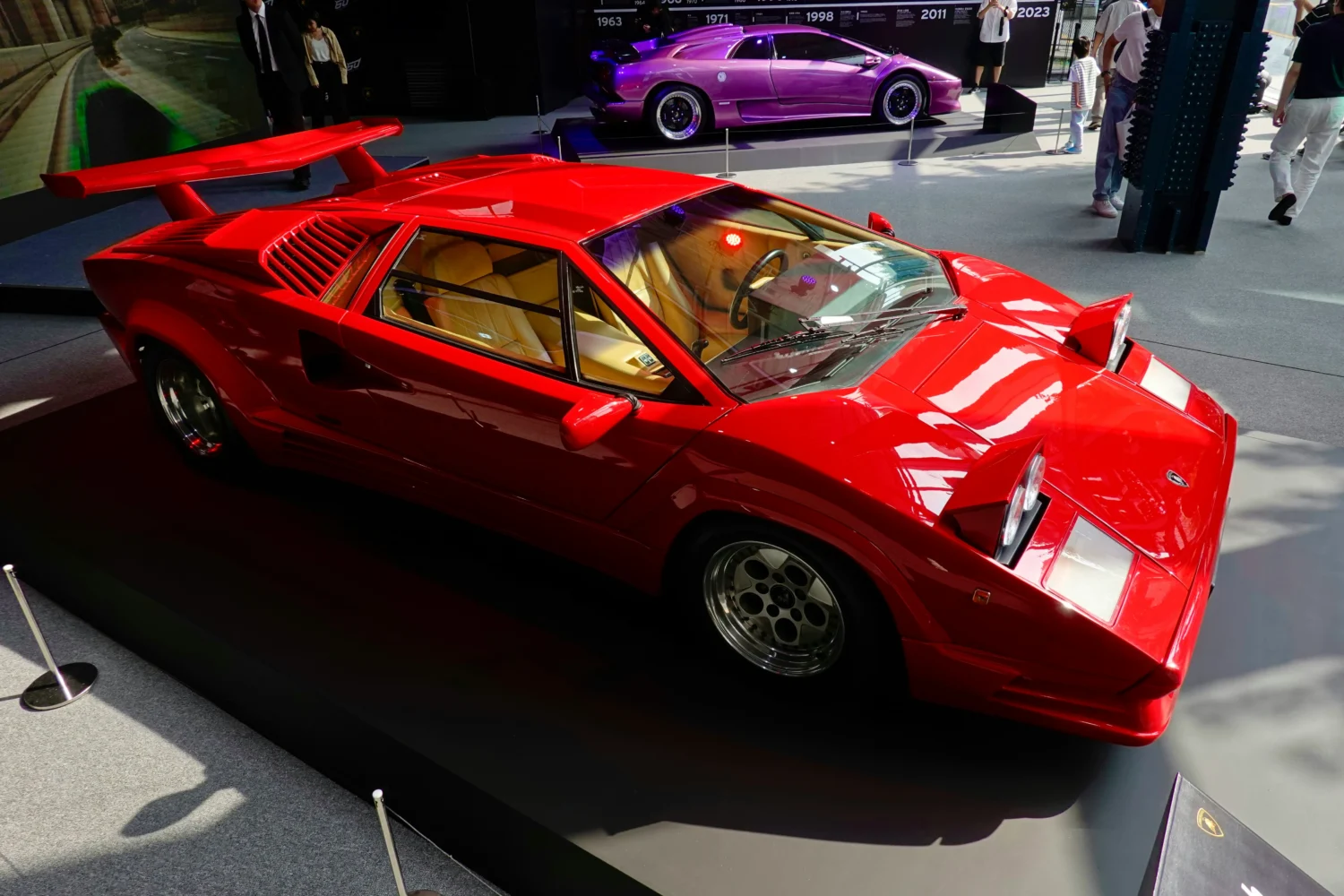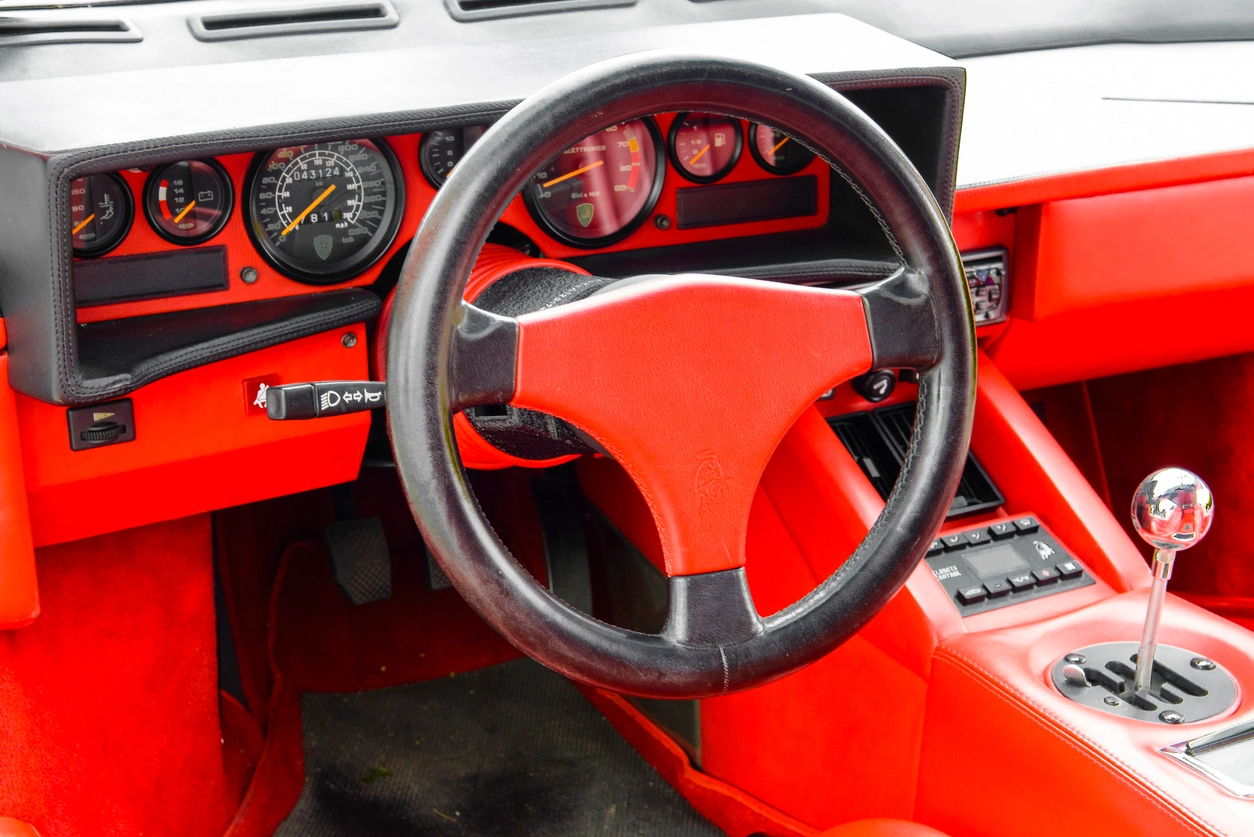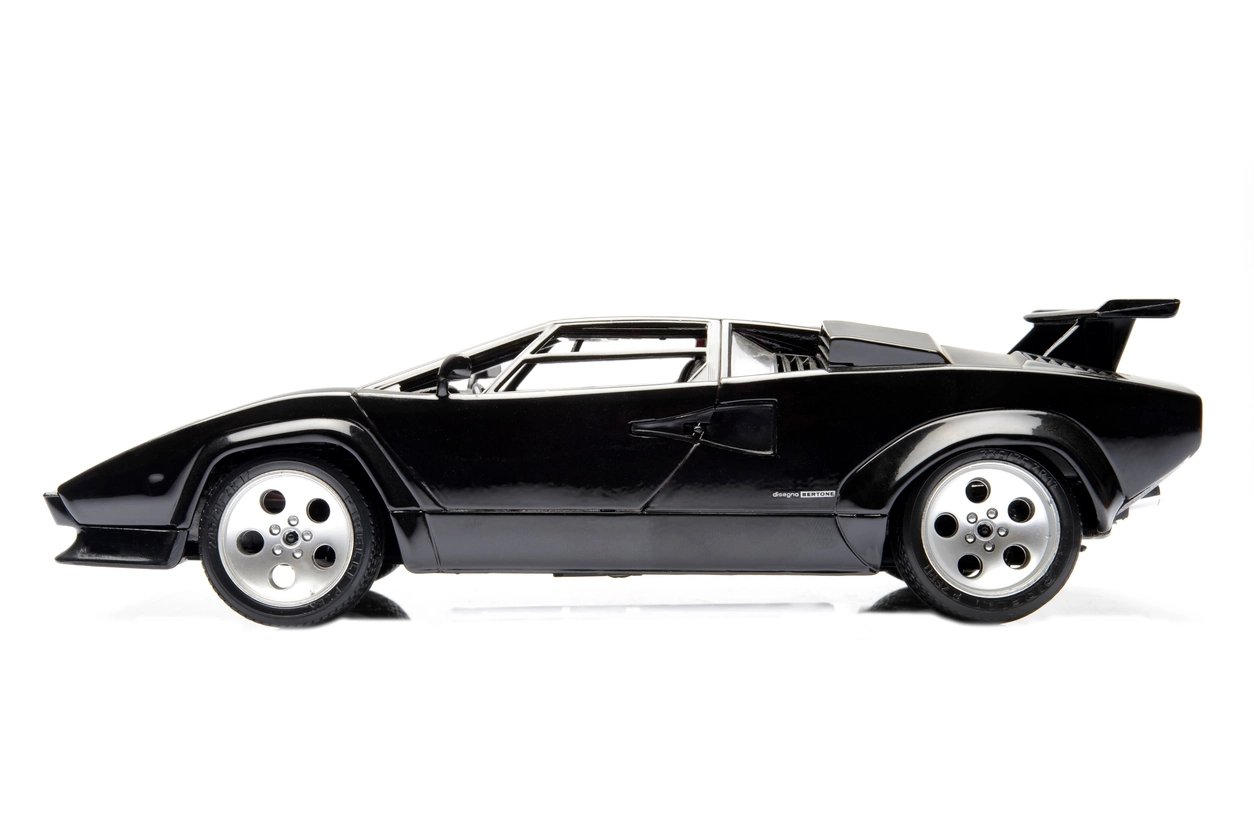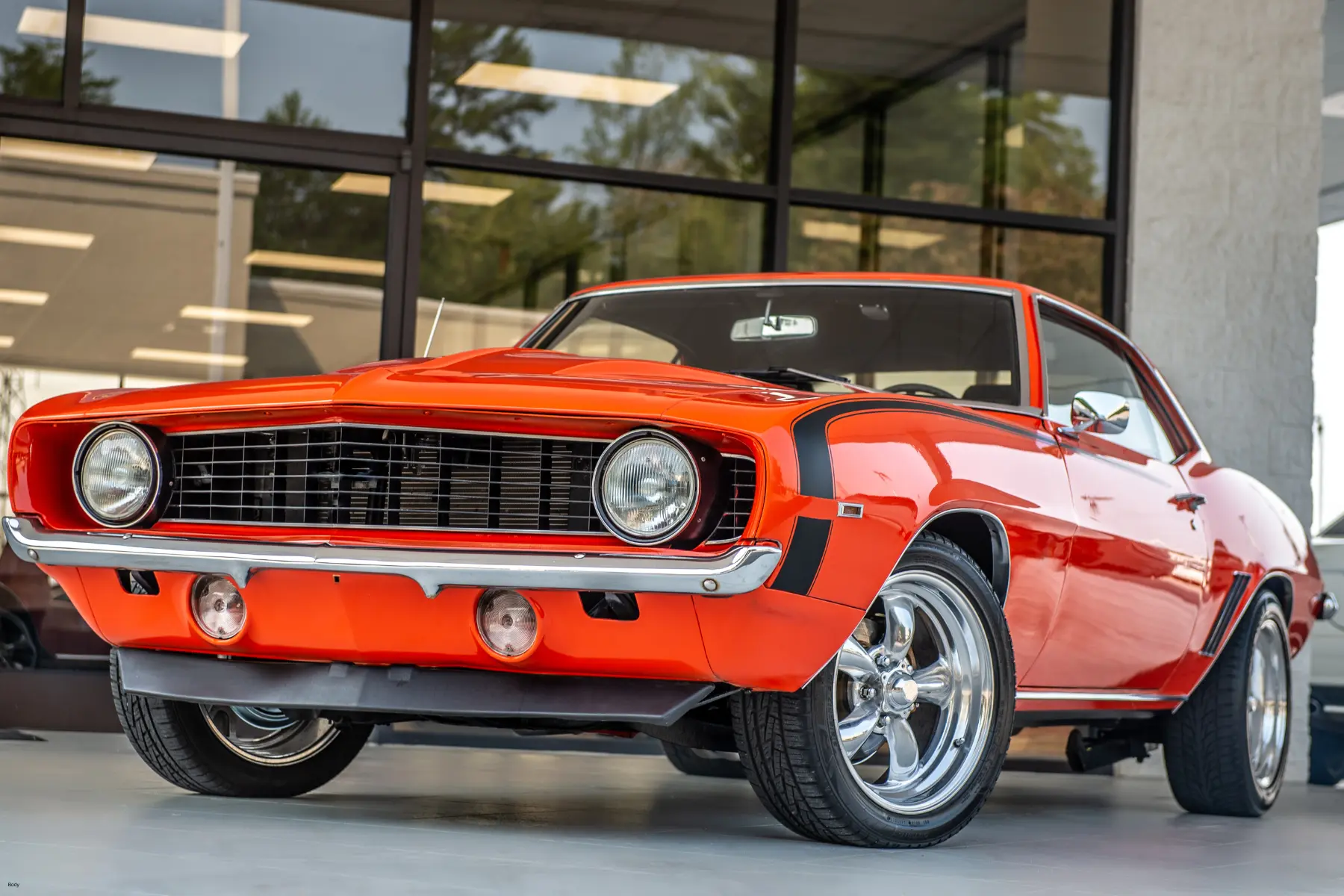The Lamborghini Countach is an iconic sports car that has left an indelible mark on the automotive world and carved its name into the records of motoring history, and let’s face it, it was the most popular wall poster for every kid who grew up dreaming of supercars. Its development began in the early 1970s, with the goal of creating a successor to the revolutionary Lamborghini Miura. The Countach was designed by Marcello Gandini of the Bertone design studio, who had also penned the Miura. The name “Countach” is an exclamation of astonishment in the Piedmontese language, reflecting the public’s reaction to the car’s striking design.
The prototype, known as the LP500, was unveiled at the Geneva Motor Show in 1971. It featured a mid-mounted V12 engine and a wedge-shaped, sharply angled design that was a dramatic departure from the curvaceous Miura. The production version, the Countach LP400, was launched in 1974. It retained the prototype’s distinctive design but with some modifications for practicality and aerodynamics. The car’s scissor doors, a feature that would become synonymous with Lamborghini, added to its futuristic appeal.
Over its production run, which lasted until 1990, the Countach underwent several evolutions. The LP400 was succeeded by the LP400 S in 1978, which introduced wider tires, flared wheel arches, and an optional rear wing that became a popular feature. In 1982, the LP500 S was released, featuring an enlarged 4.8-liter engine. This was followed by the LP5000 QV in 1985, which boasted a 5.2-liter engine with four valves per cylinder (hence “QV” for “quattrovalvole”). The final iteration, the 25th Anniversary Countach, was introduced in 1988 to celebrate Lamborghini’s 25th anniversary. It featured updated styling and improved aerodynamics.
Performance-wise, the Countach was a marvel of its time. The original LP400 could accelerate from 0 to 60 mph in around 5.6 seconds and reach a top speed of approximately 170 mph. Later models, with more powerful engines and improved aerodynamics, boasted even better performance figures.
Why is it called Lamborghini Countach?
The name “Countach” originated from the Piedmontese dialect spoken in the Piedmont region of Italy. It is an exclamation of astonishment or admiration, akin to saying “Wow!” or “Incredible!” in English. Here is how Marcello Gandini, who oversaw design of the Countach, described the origin of the name for the Lamborghini archives:
“When we made cars for the car shows, we worked at night and we were all tired, so we would joke around to keep our morale up. There was a profiler working with us who made the locks. He was two meters tall with two enormous hands, and he performed all the little jobs. He spoke almost only Piedmontese, didn’t even speak Italian. Piedmontese is much different from Italian and sounds like French. One of his most frequent exclamations was ‘countach’, which literally means plague, contagion, and is actually used more to express amazement or even admiration, like ‘goodness’. He had this habit.
When we were working at night, to keep our morale up, there was a jousting spirit, so I said we could call it Countach, just as a joke, to say an exaggerated quip, without any conviction. There nearby was Bob Wallace, who assembled the mechanics—we always made the cars operational. At that time you could even roll into the car shows with the car running, which was marvelous.
So jokingly I asked Bob Wallace how it sounded to an Anglo-Saxon ear. He said it in his own way, strangely. It worked. We immediately came up with the writing and stuck it on. But maybe the real suggestion was the idea of one of my co-workers, a young man who said let’s call it that. That is how the name was coined. This is the only true story behind this word.”

Countach Design
Nuccio Bertone played a pivotal role in the development of the Lamborghini Countach. He was an influential Italian automobile designer and the head of Carrozzeria Bertone, a renowned design and coachbuilding company. It was his design studio, under the direction of designer Marcello Gandini, that created the groundbreaking and iconic design of the car. Nuccio Bertone’s vision and leadership allowed for the creation of bold and innovative designs that pushed the boundaries of automotive styling.
Beyond the Countach, Nuccio Bertone and his design studio were instrumental in shaping the design language of Lamborghini. They were responsible for the design of the Lamborghini Miura, which preceded the Countach and is often regarded as the first modern supercar. The Miura’s success established a strong relationship between Lamborghini and Carrozzeria Bertone, leading to the collaboration on the Countach and other Lamborghini models.
Nuccio Bertone’s contributions to Lamborghini and the automotive industry as a whole are significant. His design studio’s work on Lamborghini models helped establish the brand’s reputation for producing visually stunning and high-performance supercars. Through his innovative designs and collaborations, Nuccio Bertone left a lasting legacy in the world of automotive design.
The rear mid-engine design used on the Lamborghini Countach is a significant departure from the more conventional front-engine layout commonly found in many cars. In this configuration, used by many Lamborghinis, the engine is placed behind the passenger compartment but ahead of the rear axle. This contrasts with a front-engine design, where the engine is located at the front of the vehicle, typically ahead of the front axle.

This rear mid-engine layout offers several advantages in terms of performance and mechanical functionality. Firstly, it allows for better weight distribution, with a more balanced spread of mass between the front and rear axles. This balance enhances the vehicle’s handling, stability, and traction, particularly in high-speed cornering and acceleration. The centralization of mass around the middle of the car lowers the center of gravity, which further improves handling and reduces the tendency for body roll.
Additionally, the rear mid-engine design enables better aerodynamics. The absence of an engine in the front allows for a more streamlined and lower front profile, reducing air resistance at high speeds. The placement of the engine closer to the rear also aids in providing better traction to the rear wheels, which is crucial for a high-performance car like the Countach, where power is predominantly sent to the rear wheels.
However, this design also presents some challenges. It can limit interior space, as the engine intrudes into the area that might otherwise be used for passenger or cargo space. Moreover, cooling the engine can be more complex due to its location away from the front of the car, where airflow is more readily available. As a result, cars with rear mid-engine designs often require additional cooling mechanisms, such as larger air intakes or complex ducting systems, to ensure the engine operates within optimal temperature ranges.
The rear mid-engine design of the Lamborghini Countach contributes significantly to its legendary performance and iconic status in the automotive world. It exemplifies how engineering choices in vehicle design can have profound effects on the driving experience and the functional characteristics of a car.
The legacy of the Lamborghini Countach is profound. It is widely regarded as one of the most iconic and influential sports cars in history. Its radical design and performance set new standards in the automotive world and inspired a generation of supercars. The Countach’s influence can be seen in the design of many subsequent Lamborghinis, and it remains a symbol of the brand’s bold and innovative spirit. Today, the Countach is a highly sought-after collector’s item, revered for its groundbreaking design and its place in automotive history.





